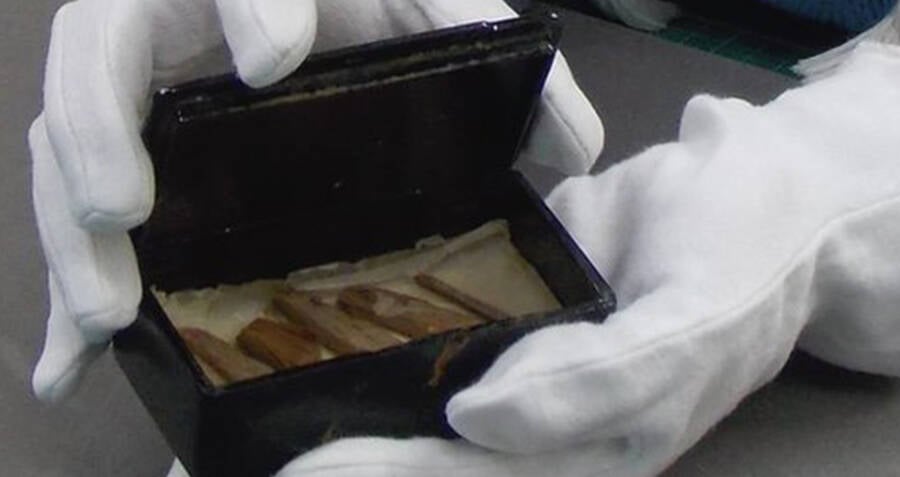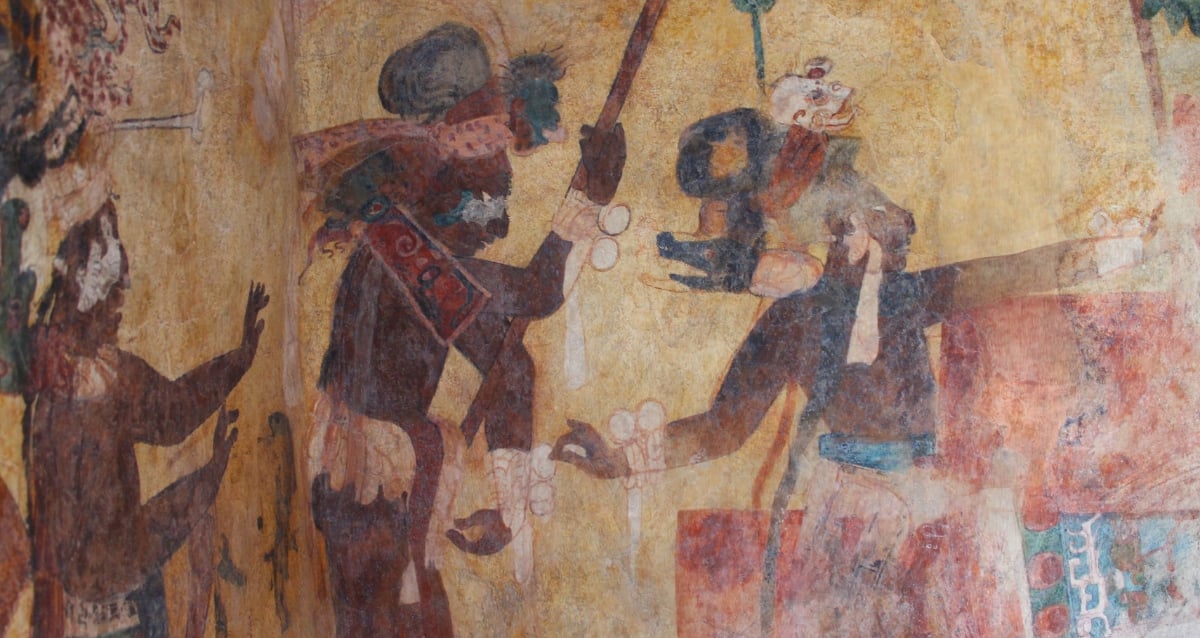Ancient Egyptian Relic Hidden for Millennia Emerges from Unexpected Scottish Cigar Box Mystery
A radiocarbon dating of the wooden fragment, which has now splintered into multiple pieces, revealed that it dates back sometime between 3341 to 3094 B.C. This is an incredible revelation as it means the artifact predates the pyramid’s construction by five centuries.

Khaled Desouki/AFP via Getty ImagesThe wooden fragment is one of the only three objects taken from the pyramid.
“It is even older than we had imagined,” said Neil Curtis, Head of Museums and Special Collections at the University of Aberdeen. “This may be because the date relates to the age of the wood, maybe from the center of a long-lived tree. Alternatively, it could be because of the rarity of trees in ancient Egypt, which meant that wood was scarce, treasured, and recycled or cared for over many years.”
After the pyramid’s excavation, both Dixon and Grant kept the artifacts for themselves. Dixon took the ball and hook while Grant took the piece of wood. After Grant died in 1895, his collection of pilfered artifacts was bequeathed to the university. But when his daughter donated the wooden fragment in 1946, it was labeled as a “five-inch piece of cedar” and was consequently never officially cataloged.
The Egyptian Antiquities Service was originally established in the 19th century to prevent the illicit trade of such artifacts, yet pieces of the historic Great Pyramid ended up being freely exchanged between foreign entities — mostly European museums — anyway.
The case of the long-lost Great Pyramid artifact is another reminder of archaeology’s long history of colonialism, which is how many artifacts like the Dixon relics “mysteriously” end up exhibited in museums far away from their original cultures, or worse, lost in a foreign university for decades.











